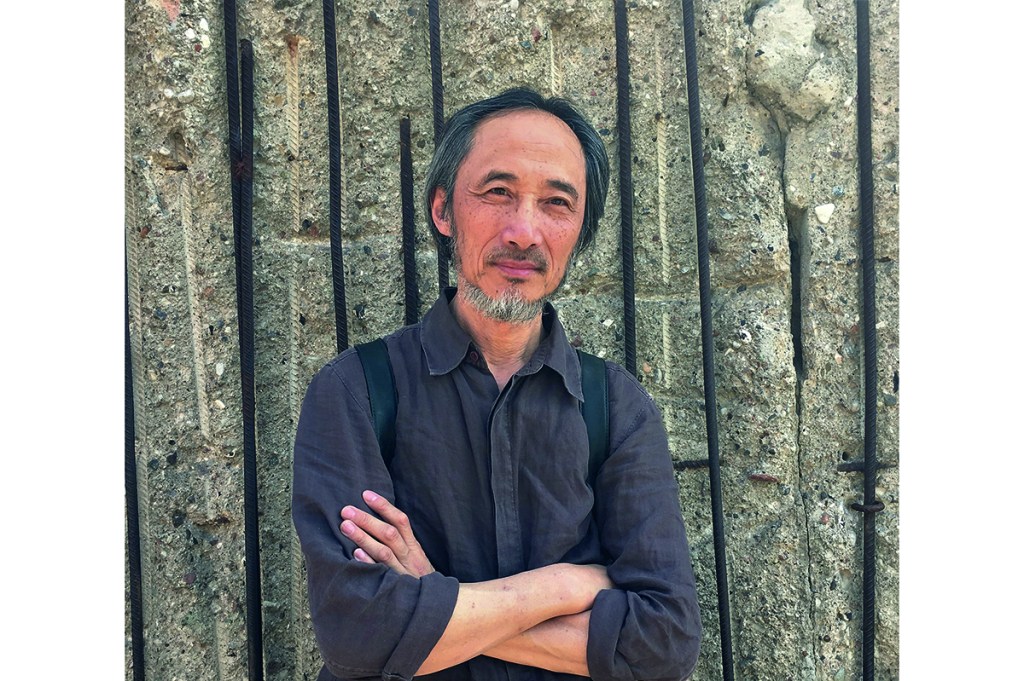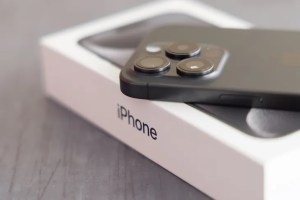We don’t yet know the full story of the coronavirus outbreak in China. Even so, it already has a tragic hero: Dr Li Wenliang. His name is known around the world now, but the details of what happened to him are telling.
On December 30 last year, Li warned fellow medics on a WeChat group that seven patients had been quarantined at his hospital in Wuhan. They had some kind of coronavirus. A few days later, after screenshots of his messages were posted to the wider internet, he was summoned by the Wuhan Public Security Bureau. The secret police presented him with a typed confession stating he had lied. He signed it. He had to. The police document was sententious but chilling: ‘Your behavior severely disrupted social order… We advise you to calm down and reflect carefully. We sternly warn you: if you are stubborn, do not show repentance, and continue to conduct illegal activities, you will be punished… Do you understand?’
I spoke about Dr Li to Ma Jian, the author known as China’s Solzhenitsyn. All his books are banned in China and he lives in exile in London. In any normal society, he tells me, Dr Li would have reported his concerns directly to the hospital’s managers. ‘But China is not a normal society. Dr Li was silenced.’ Ma is in no doubt that China’s leader, Xi Jinping, and the Chinese Communist party are ‘the primary culprits for this global catastrophe’. That is because, he believes, Beijing’s stamp was on events in Wuhan from the start. State television announced that eight medics were being investigated for ‘rumor-mongering’. The national news agency carried a statement from the Wuhan police instructing citizens to ‘jointly build a harmonious, clear and bright cyberspace’. Ma says that while the authorities were busy pretending nothing was wrong, the number of infected grew exponentially. They missed the chance to stop the virus.
Dr Li went back to work, having promised to respect the law on public security and social harmony. He caught the virus he’d warned others about. By the end of January, he was in an intensive-care bed in his own hospital, wearing an oxygen mask and drenched in sweat. He decided to speak to the New York Times, an extraordinarily brave thing to do after his previous trouble with the police. He said: ‘There should be more openness and transparency.’ He also spoke to the Chinese news site Caixin: ‘I think a healthy society should not have just one voice.’ This was open defiance.
He died from the virus days later. He was 34 and left behind a five-year-old son and a pregnant wife. There were millions of angry posts on Chinese social media — despite rigorous censorship, with certain words blocked automatically. By overreacting to Li’s small act of kindness in warning his fellow doctors, the authorities had managed to turn him into a symbol. They rushed to undo the damage. Beijing sent anti-corruption investigators to Wuhan; they found the local police in error. Li was declared a martyr, the state’s highest honor (one instituted by Mao, who said: ‘All men must die, but death can vary in its significance.’) The state was trying to reclaim Li as its own. Official media parroted the line that ‘certain hostile forces’ had tried to exploit what was called the ‘Li Wenliang incident’ — but he had remained a loyal member of the Communist party. He was a hero fighting under the ‘strong leadership’ of the party’s Central Committee, ‘with Comrade Xi Jinping at its core’.
The party functionary newly put in charge of Wuhan said citizens should get ‘gratitude education’ to encourage them to properly thank Xi. This reflects the official story of the pandemic’s beginnings: the local authorities in Wuhan were slow to act but then Comrade Xi stepped in to direct a ‘People’s War’ against the virus. This contrasts with the narrative from the Trump White House: the Chinese are engaged in a cover-up. They knew from the start that the virus could be passed between humans, not just caught from animals; they knew there would be a pandemic long before they told anyone. They’re still lying about how many cases they’ve had, about the number of deaths and about the origins of the virus in a Chinese laboratory.
President Trump deals with the truth as casually as he has the many women in his past. But Ma has no time for the ‘shameless apologists’ in the West who defend China, ‘a regime that dragged infected patients down the street and herded them like cattle into trucks’. He goes on: ‘I suspect that some Westerners’ praise of the Chinese Communist party is political, influenced by hatred for America. But the truth is, it is perfectly possible to abhor everything that Trump stands for, to berate his reckless mishandling of the pandemic, to consider Boris Johnson’s management a catastrophe, while at the same time condemning Xi Jinping’s repressive dictatorship for [China’s] cover-ups, murderous lies and inhumanity.’
President Trump says he’s seen proof that the virus came from a Chinese lab. It might have got out through a ‘horrible mistake’. He was signing a proclamation for Older Americans Month when he also wondered aloud if ‘somebody’ did ‘something on purpose’. He was signing another proclamation — it’s one of his favorite things to do — when he went even further. It was National Nurses Day — ‘That’s a very important day’ — and he was sitting behind his desk in the Oval Office, flanked by a couple of nurses in scrubs. ‘We went through the worst attack we’ve ever had on our country… This is worse than Pearl Harbor. This is worse than the World Trade Center.’
This was Trump being Trump, half-accidentally accusing the Chinese of an act of war with a biological weapon. No one else in his administration has repeated this unhinged claim; even Fox News ignored it. But Trump’s Secretary of State, Mike Pompeo, has flirted with the idea that the virus was ‘man-made’ (if not a weapon). And, whether it’s natural or manufactured, he says there is ‘enormous evidence’ that the virus leaked from a laboratory.
We have not been shown this evidence. Instead, we are told there is ‘intelligence’. But what might be in the public record to support Trump’s case? China says the virus came from bats or cats sold for food in a live animal market in Wuhan. It is at the very least an enormous coincidence that Wuhan has two laboratories doing research on coronaviruses from bats. The market was just 300 yards from one of the labs, the Wuhan Center for Disease Control, which housed some 600 bats with various coronaviruses. A Chinese scientific paper — now wiped from the internet — says a researcher there was attacked by a bat, and another covered in bat urine.
And the idea that the virus is man-made is not just a crazy theory that Trump got from one of his golf buddies. Professor Luc Montagnier, a French virologist and Nobel Prize winner, has said that the virus was the result of ‘very meticulous work’ by molecular biologists. ‘This virus was created,’ he said. Prof Montagnier remains a lone voice but the second of the Wuhan laboratories, the Institute of Virology, had been doing so-called ‘gain of function’ work, whereby viruses are made more lethal or infectious in order to study them. This kind of research is so dangerous that it was banned for a time in the US. Perhaps it will be banned again after this pandemic. It is certainly terrifying to discover that this was going on. Wuhan was part of an international team that took the genes for the coronavirus’s ‘spike’ protein, which helps it to invade human cells, and spliced them into a more infectious version of the virus.
The research in Wuhan is led by China’s ‘bat woman’, Dr Shi Zhengli, a hero to some Chinese, a villain to others. She says she worried at first that she might be responsible for the pandemic. She didn’t ‘sleep a wink’ until tests came back showing that the virus killing people in Wuhan wasn’t an exact match for the one in her lab. She told Scientific American: ‘That really took a load off my mind.’ A number of western virologists agree: the two strains of the viruses are different, so different that the one behind the pandemic must have evolved decades ago, only now jumping from bats to humans. Case closed? Not quite. Scientists in Australia have said the Chinese might have been growing the virus in the human ‘receptor’ protein that the spike protein latches on to — pushing the virus to evolve more quickly into something far more deadly.
These are suspicions, not proof. For the time being, most scientists — and it seems the spies — say the evidence suggests that nature, not man, is to blame for the pandemic. Still, there are lingering questions: why did the Chinese authorities order lab samples to be destroyed? Why was the Wuhan market sealed and bleached? Were these measures to destroy the pathogen for safety or to hide the evidence?
Ma Jian points out that China has never provided concrete evidence that the Wuhan market was the source of the virus. He wants the regime to open its labs to independent investigators. ‘In times of national emergency, the Chinese government’s first instinct is to cover up. This is the least it owes to the world for the calamity it has inflicted.’
Whether China did inflict the calamity is partly a matter of dates and chronology. On December 31, it warned the World Health Organization about a cluster of ‘pneumonia of unknown cause’ but did not say there was human-to-human transmission. Dr Li knew then that this was possible — patients were being quarantined in his own hospital. We now know that President Xi secretly took charge of the fight against the virus on January 7, around the time that Li caught it, but celebrations for the Chinese New Year were allowed to go ahead as planned in Wuhan, with a mass banquet for 40,000 families. Ma says: ‘The authorities hoped that if they suppressed news of the virus it would disappear. As always, they prioritized saving the Chinese Communist party’s face over saving people’s lives.’
Ma’s book China Dream is an unflinching satire of Xi’s ‘China Dream of national rejuvenation’ and the ‘rabid consumerism’ that goes with it. This was consummated when China’s lockdown ended and the Hermès boutique in Guangzhou broke the national record for a shop’s takings in a single day, selling $2.7 million worth of handbags and shoes. One customer boasted that she had spent $100,000 on a handbag (the Hermès black crocodile Birkin 30).
Ma says in the introduction to China Dream that his fellow Chinese have been made into ‘overgrown children who are fed, clothed and entertained, but have no right to remember the past’. He describes the museum on Tiananmen Square, where China’s history after 1949 is ‘cleansed of darkness and reduced to an anodyne, joyful fairy tale’. The regime, he writes, has lied about the Great Leap Forward, a reckless campaign to transform China into a Communist utopia that caused a famine and killed 20 million people; it has lied about the mass psychosis of the Cultural Revolution that plunged China into a decade of mob violence; it has lied about the massacre of peaceful protesters around Tiananmen Square in 1989. It is lying now, he says, about the coronavirus outbreak; it is a regime built on lies.
***
Get three months of The Spectator for just $9.99 — plus a Spectator Parker pen
***
The US Senate has passed a bill calling on China to tell the truth about coronavirus — and would rename the street outside the Chinese embassy in Washington DC ‘Li Wenliang Plaza’. That won’t much bother the Chinese government. Absurdly, it blames ‘the US Army’ for causing the outbreak in Wuhan and — more convincingly — points to America’s own failures in dealing with the virus.
Ma says the crisis may have made the regime stronger than ever. ‘The Communist party has recast itself as the savior of the Chinese people, and even the benevolent savior of the world. The propaganda has worked, and the masses have returned to the blissful slumber of Xi Jinping’s China Dream. Dr Li has been appropriated. All dissenters have been disappeared. If China’s economy makes a full recovery, the party will be untouchable.’
This may be the China the West faces after the pandemic is over. As I say, we don’t yet know the full story of the coronavirus outbreak in China. Dr Li and Ma Jian warn us that we may never know it.


















